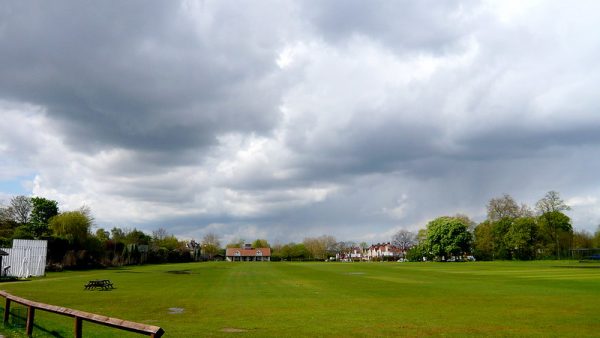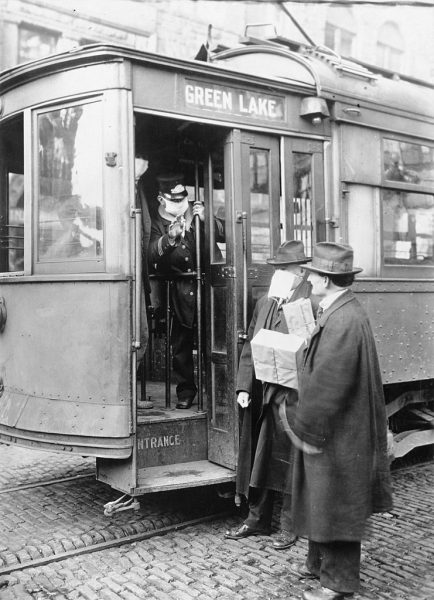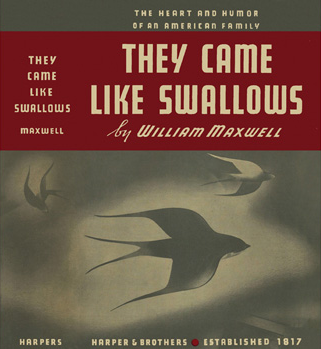1.
Nothing so wild as time, I type into the Subject field in an email to a friend in South Africa. Time no longer feels tame, not even as a dog straining at the end of its leash and yanking me forward so fast I fail to see the world passing. It has never seemed as unpredictable as it does now: susceptible to being studied in long hours of apparent inactivity, days approachable in their static repose, until in a flash a minute opens its mouth to tear pages from the calendar.
And then, unannounced, the past returns, fresh as yesterday.
2.
Each day after lunch, we—my husband and I—walk in the playing fields of the school near our home in south-east London. We stopped going to the park down the road even before the lockdown because it had become too packed with runners and cyclists who kept heedlessly passing us only inches distant. Until there is a treatment or vaccine, I anticipate keeping to this habit. In the playing fields, surrounded by hedges and fences that seem to prevent most people realizing the school has opened its property to all, we feel a measure of security. It is possible to avoid the few others walking the perimeter, to plot a wide arc around the men who bring chrome dumbbells and grunt ostentatiously in the sun. Unlike the park, with its meandering paths and blind corners, here there is a sense of wide-open space—not in great abundance but enough to counter the pall of claustrophobia that begins to settle if we leave it even a day without stepping through the front door of our flat. It is not lost on me that we feel this sense of relative freedom only on enclosed private land, its gates now marked with two-meter-long banners reminding us to keep that distance, which some scientists are beginning to suggest is not nearly enough [1].

Still, these perambulations are insufficient. We come home and each spend an hour, every day, on the spin bike that now sits in the kitchen-dining room. We contort ourselves each morning for half an hour in front of a Yoga-with-Adriene session on YouTube. Without these periods of physical exertion that are also markers of time passing in the course of each day, giving it a recognizable shape and predictable structure, we have learned that time quickly turns feral. Days have been lost when I was meant to be reading Proust or working on a book project that now, in light of the crisis convulsing the world, seems to require if not a total re-conception of its aims, then at least a new process of explaining to myself what the temporal moment should be for a narrative about two strangers travelling together across America. Before the virus? Or after?
Is it defensible—either aesthetically or ethically—to write a story that was going to stage a crisis of the present without acknowledging the crisis I could not have foreseen when I started work on the book two years ago, a crisis that now alters nearly every aspect of human life?
Isolation (even together with one’s spouse, an enforced solitude-in-company) is not the problem. Since moving to Britain nearly nineteen years ago, this country has turned me into an isolate, someone who is happier alone or with one or two others; isolation has become a mode of psychological self-preservation. Groups exhaust and deplete me and I need to recharge for periods of time without having to speak to anyone but those who know me best. I am equipped for isolation and know how to thrive on it.
Rather, the creative problem is the uncertainty of this moment and its fast-slow violence, a violence of successive torturous marathons punctuated by sprints of exceptional savagery, a violence born from and marked by the collision of pandemic with political dysfunction, systemic collapse, nationalism, populism, late capitalism, the supremacy of the market. If we do not know how long this will last, or what the crisis will ultimately do to society for as long as the virus is with us, how can we predict what is likely to come after, if there is an after?
3.
As a way of trying to make sense of my own response to Covid-19, like so many others I have returned to literature that responds to past pandemics. American writer William Maxwell’s second book, They Came like Swallows (1937), published when he was twenty-nine, emerged from the loss of his mother in the 1918 influenza pandemic.
Organized in three sections, each focalized through a different character, the novel is a subtle meditation on the inescapability of solitude even when surrounded by one’s own family.
In its first part, told from the perspective of eight-year-old Peter ‘Bunny’ Morison, who we meet waking on the second Sunday in November 1918 in the bedroom he shares with his older brother, Robert, the novel lets us see how moments of affection that mark each day are the ordinary treasures Bunny values—as much as the Native American doll that sleeps beside him at night. Without needing to tell us explicitly, Maxwell trusts that this detail, the boy attached to a female doll, in combination with the child’s nickname, will communicate his otherness in a world of conventional gender roles and expectations.
Just as many of us now begin every communication with friends, family, and colleagues by asking hopeful questions about whether they and theirs are well, Bunny’s first interaction with his mother, Elizabeth, is a playful refrain of ‘How do you do?’ and ‘How do you do and how do you do again?’ [2]. Over the course of the novel, she and he will both fall ill with influenza. It is possible to read in Bunny’s question to his mother—the first words he speaks in the novel—a submerged anxiety about Elizabeth Morison’s condition from the moment we meet her. By November 1918, the pandemic was in its second wave, already squarely in the public consciousness across the United States, gripping cities like Philadelphia and Boston, New York and Chicago; in October, San Francisco had recommended that the public begin wearing masks [3].

Even after only a night apart, intimacy between child and mother is riven by concern about the health of the beloved who is embraced. But whatever anxiety Bunny may feel unconsciously is overwhelmed by enthusiasm for seeing his mother again, so much so that he ‘plant[s] a kiss somewhat wildly on her mouth’ [4]. In turn, his mother preoccupies herself with her youngest’s hygiene, holding him at a distance ‘to see whether he had washed thoroughly’; the anxiety for Elizabeth, in the third trimester of a pregnancy (as yet not revealed to Bunny), is whether the child wildly kissing her has cleaned himself adequately. Hygiene is the force driving characters’ isolation from one another as the novel unfolds [5].
Maxwell tells us that when Bunny and his mother are alone, there is a sense of the world being ‘intimate and familiar’, made so by their awareness of the other’s ‘presence’. In the absence of his mother, however, ‘nothing was real to Bunny—or alive’:
The vermilion leaves and yellow leaves folding and unfolding upon the curtains depended utterly upon his mother. Without her they had no movement and no color. [6]
For Bunny, true isolation occurs only when his mother is unreachable, and this results in the bleeding out of color and life, the greying of his world: play loses its imaginative force so that objects remain only themselves, incapable of transformation into more fantastic avatars.
The remaining two sections of the novel, told from the perspective of Bunny’s brother, Robert, and their father, James, demonstrate with cumulative force the impossibility for each of these characters of breaking out of their internal solitude in a moment in which enforced isolation due to illness is the sharpest marker of individual experience. If Bunny’s isolation turns his world monochromatic and insusceptible to imaginative transformation, isolation manifests for Robert as a struggle with being displaced from the family home when his parents leave town so that his mother can give birth attended by a specialist.

Removed from his friends, boarding with an unsympathetic paternal aunt and uncle whose lives are marked by such grotesqueries as a purely ornamental fireplace screwed to the wall, Robert succumbs to rumination. When Elizabeth falls ill and eventually dies after the birth of her baby, Robert fears that he, having failed to keep her away from Bunny when his little brother was at the height of his own illness, is responsible for her sickness. For Robert, genuine connection—for instance with his beloved maternal Aunt Irene—is represented only indirectly or in retrospect, and this tendency carries forward into the final section, seen through the eyes of the boys’ father, James.
It is as if age and masculinity are barriers to connection that harden over time, each male member of the Morison family legible in Freudian terms as exemplars of id, ego, and super ego, their psychological states, the ways in which they function both to themselves and in the world of the novel, tied to their relative place in life and within the structure of the family.
For James, grief is the isolating glass shield through which he can view his sisters-in-law and other relatives, as well as the sons who already seem fundamentally unknowable to him; he never achieves the kind of connection that remains possible, even if only fleetingly, for Bunny and Robert. Company is not necessarily an antidote to solitude; if anything, in Maxwell’s novel company produces—for Robert and James—a stronger sense of isolation and alienation than being alone with one’s thoughts and emotions, however troubled and deranging these may prove.
4.
I first read William Maxwell after moving from New York to Oxford for graduate school. Like me, Maxwell was a child of the Midwest who, in early adulthood, left to live elsewhere. Born and raised in Illinois, he later made his life in New York, but much of his fiction remains preoccupied with the sparsely populated towns of middle America in the first half of the twentieth century, the towns that were themselves spread thinly across the Great Plains, cropping up out of windbreaks, near riverbends, along train lines, settled in the nineteenth century by Germans and Scandinavians who brought to the deceptively unremarkable landscape of flatlands and gently rolling hills a quietist approach to daily life and civic planning. It is a landscape given to isolation, one that can produce fruitful introspection as much as crippling loneliness.
A year before moving to Britain, on a warm New York day in September 2000, I left work at 57th Street and 8th Avenue in Manhattan and took the subway up to St. John the Divine, where I met my roommate, a recently retired ballet dancer, to attend a joint memorial service for Maxwell and his wife, the painter Emily Maxwell. Both had died earlier in the summer, eight days apart. We were there not because we knew either of them but because the Maxwells were friends of my roommate’s aunt, my childhood acting teacher in Omaha, who was unable to make the trip.

We found a place near the back of the cathedral, listened to the eulogies, and stood with everyone at the end of the service to sing ‘Don’t Fence Me In’. My grandmother, the same age as Maxwell, had died in June, and when I sang Cole Porter’s ersatz cowboy tune it was as much for my grandmother as for the Maxwells. I was not present at her death; it came too suddenly, and over the course of the summer the grief had proved, at times, almost unmanageable. When she went into the hospital I had failed to fly out to California and even in our last conversation on the phone did not allow myself to believe she would actually succumb to the cancer consuming her.
For the Maxwells, such fixtures of New York life (William Maxwell was for decades a revered fiction editor at The New Yorker), the seemingly eccentric choice of song to close their memorial service was testament not only to a lingering desire for the wide open spaces of the American west that belonged to their youth, but also to the positive force of solitude:
‘Let me be by myself in the evening breeze / And listen to the murmur of the cottonwood trees’.
While solitude can exacerbate grief and anxiety—as is now all too apparent—it nonetheless contains within it the possibility for different kinds of connection and reflection.
5.
To be isolated from the beloved in a moment of global crisis is to make the ordinary solitude of existence—the solitude one feels even in company, the solitude of feeling out of step, in a different key—all the more acute, and painful. For Maxwell’s Bunny Morison, that sense of alienation appears rooted in his bookishness and the absence of stereotypical boyishness. For Robert, it is marked on the body, in an amputated leg lost to an earlier accident, which makes his father view him as less robust than the boy believes and strives to prove himself to be.
I returned to Maxwell’s novel after nearly two decades not only because I remembered it being about the earlier pandemic, but because I recalled the consolation it seemed to offer in the moment I first discovered it, when I felt as though I should not be as alienated by the move to Britain as I was, and when I was still trying to process the loss of my grandmother. The American literature I had largely eschewed in favor of British writers suddenly felt like the culturally familiar comforter I needed in an environment where fellow British students mocked my accent and pretended not to understand what I was saying.
Alienation of place, the sense of being removed and out of step, of coming from somewhere else culturally, even ideologically (in my case a New York that I can now no longer reach with any great ease), produces a sense of solitude so profound it can feel deranging.
As my husband can no longer easily reach the South Africa where his aging mother lives alone, so I cannot easily travel to the New York where mine also lives alone. Certainly, we could each fly to our respective countries and submit to two-week quarantines, but the risk of undertaking such trips militates against all but emergency travel. We know that we are hardly unique in this respect, but that does not mean the separation from our closest family members is any easier to bear, and it can make the time feel as endless as it does vanishingly short. Like Maxwell’s characters, we have no choice but to embrace solitude and isolation from our beloveds as a protective measure, one in which we can but hope it may prove possible to hear murmurs of different origin and register than those we are used to admitting.
[1] See Jad Abumrad, host, ‘Dispatch 4: Six Feet’, Radiolab, WNYC Studios, 11 April 2020.
[2] William Maxwell, They Came Like Swallows (1937; London: The Harvill Press, 2002), 5.
[3] For a timeline of the 1918 Pandemic, see: 1918 Pandemic Influenza Historic Timeline, Centers for Disease Control and Prevention, National Center for Immunization and Respiratory Diseases. Responses to public health initiatives to limit the spread of influenza in 1918 were as mixed as they are today; these included an ‘Anti-Mask League’ in San Francisco. See Nancy K. Bristow, ‘What the 1918 flu pandemic tells us about whether social distancing works’, The Guardian, 29 April 2020.
[4] Maxwell, They Came Like Swallows, 5.
[5] Ibid.
[6] Ibid., 11.
Patrick Flanery is a novelist and Professor of Creative Writing at Queen Mary University of London. His most recent work includes the novel Night for Day (2019) and the creative-critical book The Ginger Child: On Family, Loss and Adoption (2019).